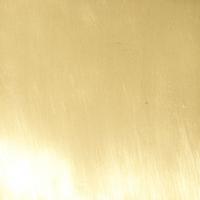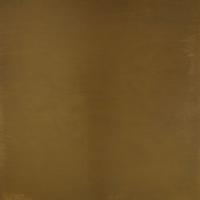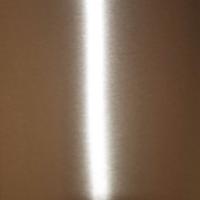As our metal finishing service includes bespoke colour and age matching, our portfolio of decorative metal finishes is ever expanding. On the main grille pages are displayed the main types of metal finishes available for those styles of grille. The most popular of those are antique brass and bronzed brass. Here you can see a slightly wider range of possible patinas including lighter and darker shades of our standard antique metal finishes. If you require metal finishing to an exact colour or shade then please submit physical samples, rather than photos or images, for us to match to.
NOTE: All our grilles and frames have a "main decorative face" and this is the one, which we patinate.


















Due to the nature of the way metal ages, the brighter polishes and finishes like mirror polished brass, satin polished brass and to an extent light antique brass will appear younger as they show the largest amount of raw metal. The darkest ones like dark antique brass and bronze which have received more intense metal finishing have an older appearance. The processes by which we achieve a patina on our metals most naturally reflects the way they would naturally age if left to their own devices in nature or in dwellings in the company of humans. We do not add an artificial layer at any stage. The antique metal finishes are achieved through sensitive application of materials to the primary face of the metal, which accelerates the natural ageing process. If you have a particular metal finish that you would like matched on your metalwork then the best chance we have of achieving that for you will be if we can actually have a sample of the finish with us when we are carrying out the process of applying the patina. If you have your own objects to which require metal finishing then please send photographs first so we can advise on the best way forward. Metal finishing is not like painting where a uniform colour layer is applied to all surfaces. There are many variable factors that will effect the outcome of the process such as temperature, humidity, concentration, cleanliness, pollutants and the quality and chemistry of both the materials that catalyse the patination process as well as the base metals being worked on themselves.
So if you want new brass floor grilles to match old brass hinges, send us a hinge or if you want bronzed frames to match old bronze, handles; send us a handle.
If it is not possible to send us actual items to match then photographs are the next best option. Just make sure that you are happy that the quality of the photograph represents a good likeness of the finish you desire. A brief description of the shininess and surface texture can also sometimes help.
Beware the terms some hardware manufacturers and retailers use to describe the finishes on their products. One person's bronze may be another person's antique brass. Some antique brass finishes, particularly those on mass produced items, can look less realistic than others. Some are even paint finishes that have been sprayed on.
The term 'bronze', whether plain bronze or antique bronze, is probably the most misused and often misleading of descriptions and can mean anything from solid bronze to antique brass to dark brown paint. If you have an item that you have bought that is described as having a 'bronze' finish that you would like us to match, then please make sure we see a sample or at least a picture of it.
All our metal finishes are genuine metal finishes that look realistic and allow the metal to speak for itself. We do not apply any additional layers to the surface of the metal that would obscure the true nature and beauty of the base metal unless specially requested.
Brass is the base metal for most of our finishes, including the plated ones. It is a wonderfully versatile metal that has it’s own inherent beauty, which may be due in part to our natural attraction to the colour gold and the sun itself. Polished brass can have a high quality mirrored appearance and as such mirrors of antiquity were often made from highly polished brass. Polished brass was particularly popular during the Victorian and Edwardian eras and so became the standard metal and finish for household furniture, fittings, door and window furniture and the nascent car industry. Polished brass obviously requires polishing which can be labour intensive and so is only done to the primary face of the grille or sheet product. Brass that undergoes regular polishing is infinitely more attractive than that which suffers the travesty of lacquering.
Antique brass is what polished brass will become if it is left unpolished. The polished surface will naturally oxidise, becoming duller and gradually darker over time. For old brass to look natural and cared for rather than abandoned it should not be an entirely even finish but rather one where the most exposed areas are lighter and the most recessed areas are darker. It is our second most popular finish only after brass itself. It can be created in an infinite variety of shades from extremely light that only just takes the shine off a satin or mirror polished finish to very dark antique brass which is almost completely matt black. We can control these finishes to appear as if the items being finished are one year old, five years old, ten years old, 50 years old, 500 years old or any age inbetween. All our grilles, framed and sheet products are finished on one displayable face unless specified and quoted for.
A copper patina is achieved in much the same way as a brass patina. This is not surprising as brass is a copper alloy and it is generally the copper in the brass that reacts to cause the brass patina. The most familiar examples of a copper patina would be seen on copper cooing pots, plumbing pipes and fittings and on the roofs of old buildings. A copper patina naturally starts to occur on polished copper after a few months but may not be truly noticeable a year or so. Copper will develop a patina more slowly indoors than it will outside. In the same way that brass ages, the copper patina will slowly dull the surface of the metal from bright pink through orange to shades of brown and eventually black when it is very old. One of the most attractive forms of copper patina is verdigris, which is usually a form of copper carbonate unless it is in a coastal location in which case it can be copper chloride. This type of copper patina is most often seen on the roofs and cupolas of old buildings in the form of a bright green or turquoise colour.
Antique copper is a finish that we can create by encouraging copper to develop a patina that dulls and darkens the surface. We can control the process to achieve the correct shade of antique copper required. This usually includes a wide range of brown and bronze shades and also the bright contrasting shades of verdigris.
Our uniquely realistic finishes which have been developed by us over 133 years are achieved not by adding foreign additives to the materials, but by understanding the true chemical nature of the base metals and the processes that naturally occur when the metals are exposed to time and a variety of environments. With this understanding we sensitively treat the new metals with a compounded levels of surface preparation, chemical treatment and finishing to naturally speed up the ageing process so that we are able to achieve in a mater of minutes what would otherwise take decades. Once the correct finish is achieved Only completely clear oils, lacquers or waxes are used where required to offer added protection and a level of added permanence to the finish.
Wherever possible, when creating products that are designed to look antique, as if they were made a long time ago, or to match those that were, we try to use materials and processes that were used during the period that we are seeking to emulate. It is sometimes the case that the products we are trying to match are ones that James Gilbert and Son made in the first place. Though the hands that are making their replacements are different, the skills, and even some of the tools used may often be the same.
The finishes displayed here from bright, mirror polished brass to dark antiqued bronze, whilst representing a broader spectrum of the colours and effects we can create on our metal products, by no means represent the limit of our capabilities. Every shade in between these colours is possible so do not be afraid to request a colour or metal finish that is 'somewhere between' medium antique brass and dark antique brass. We are always willing to attempt to create exactly the right colour for you and your project.
Metals that have undergone a patination process either naturally or artificially whereby their surface is subsequently imbued with an aged appearance are referred to as patinated metals. Patinated brass is very often seen on front doors where unlaquered brass has been left unpolished. Patinated copper is seen in plumbing and as used in building materials. Patinated copper is now becoming even more popular as a cladding material for use both internally and externally. Internally both patinated brass and patinated copper benefit their environments with both their beauty, their anti-bacterial qualities and their temperature moderation.
It should be noted that not all brasses are equal. One brass item might have been created using a casting process while another was extruded and another rolled. It is likely that all these brasses would have a slightly different chemical content and therefore age and react to environmental and chemical influences differently. This does not mean that we would not attempt to match them but it does mean that slightly different processes might need to be used to achieve, for example, a medium bronze colour on one product than would be used to create a similar colour on a different product that was made in a different way. Some types of brass are: Admiralty brass, Aich's alloy, Aluminium brass, Arsenical brass, Cartridge brass, Common brass, DZR brass, Gilding metal, High brass, Leaded brass, Lead-free brass, Low brass, Manganese brass, Muntz metal, Naval brass, Nickel brass, Nordic gold, Prince's metal, Red brass, Rich low brass, Tombac and Tonval brass.